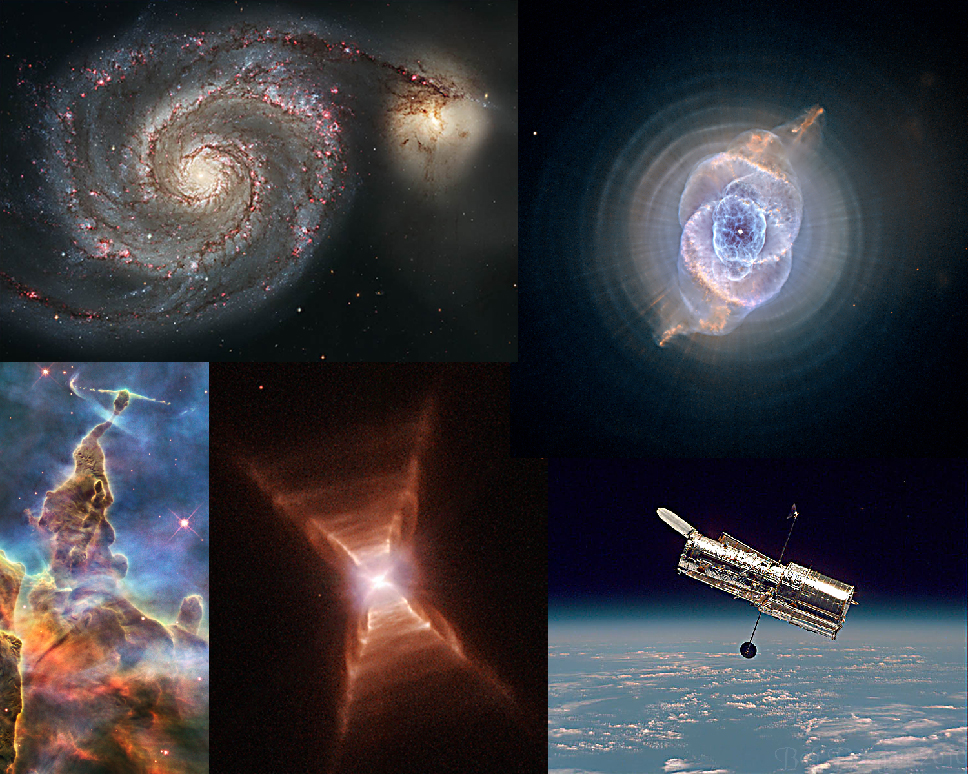
For the week including May 14, 2010

TWENTY YEARS OF THE HUBBLE
2010 marks the 400th year since Galileo Galilei introduced the age of modern astronomy by using a telescope to study the night sky. His startling discoveries about the Moon, as well as the planets Jupiter and Saturn, shattered dogmatic notions and established our Earth as part of a vast solar system. The telescope helped capture the world’s attention and our fascination with an unfolding universe has remained undiminished.
As science and technology advanced, telescopes became more powerful -- further revealing the mysteries of the cosmos. In the twentieth century, the launch of the first satellites and spacecraft would lift astronomy out of the realm of scientific theory. Our exploration of the solar system now included the ability to visit places that telescopes had only been able to glimpse. The use of telescopes had provided a foundation that the world’s space programs would use with great success, but good as they were, telescopes had a handicap. A cloudy day could defeat the best instruments, and even during excellent weather, the distorting effects of our planet’s atmosphere placed severe limitations on even the finest of Earth’s observatories.
Twenty years ago, the United States solved the problem with the launch of the Hubble Space Telescope. The spectacular pictures sent from its orbital station revealed the cosmos in unprecedented detail and transformed our capacity to explore the deepest reaches of space. Shown at lower right, the Space Telescope gave scientists close-up views of the effects of black holes at the center of galaxies along with its discoveries of a plethora of new moons, asteroids, comets, extra-solar planets and galaxies. The Hubble is regarded around the world as the greatest invention ever to contribute to human understanding of the universe.
The Space Telescope photos shown here are just a very few of my favorites:
M51 (upper left): In 1845, an astronomer in Ireland turned his powerful new telescope on a faintly glowing patch in space and was startled to find that it had a suggestion of a spiral structure inside it. This photograph, taken in January, shows the Whirlpool Galaxy in a way he could hardly imagine.NGC 6543 (upper right): My astronomy logs show that I’ve observed this planetary nebula nearly 100 times in my telescopes. With my powerful new 25-inch telescope, it’s still startling to see structures inside this planetary nebula. But before the Hubble, I could hardly imagine the enormous complexity and beauty of the Cat’s Eye Nebula.
The Carina Nebula (lower left): Stars are born in these massive concentrations of gases and dust and the Hubble’s many images of these stellar nurseries have helped us to discover hundreds of planets beyond our solar system.
The Red Rectangle (lower center): The Hubble solved the mystery of this planetary nebula’s hourglass shape, but the cause of its “rungs” still puzzles astronomers.
Last year, the space shuttle Atlantis hooked up with the Space Telescope to update its instruments and increased its investigation capabilities. The Hubble’s discoveries have kept coming -- exciting the public and providing information that challenges the reasoning and imaginations of Earth’s best scientists.
Unless otherwise indicated, all content of this web site is the copyright of Robert Deegan and all rights are reserved.
For more information, or to comment, please contact: Bob@NightSkies.org